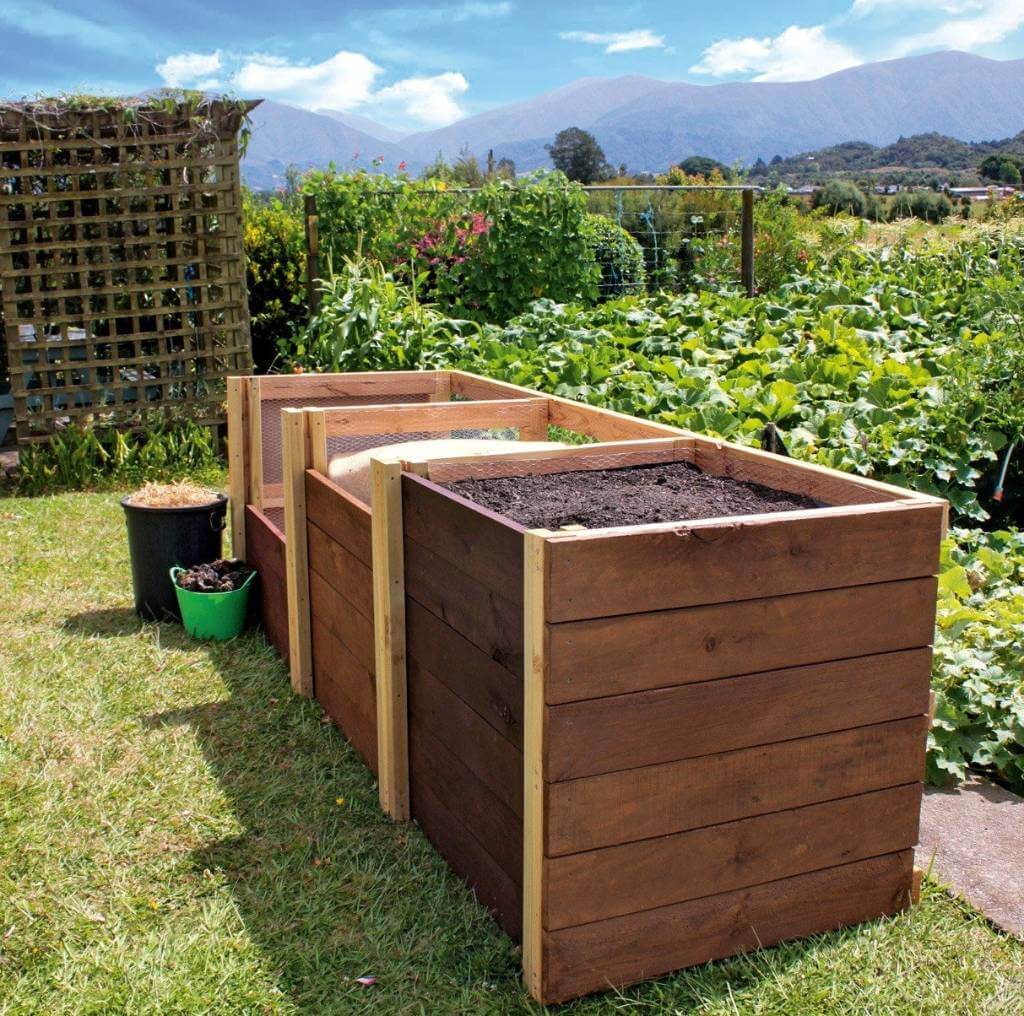Building Compost Bins for Small Gardens

Building Compost Bins for Small Gardens: A DIY Guide
Are you eager to reduce waste and enrich your soil but short on space? Building compost bins for small gardens is the perfect solution! Let's dive into the world of urban composting and explore how you can create a compact and efficient compost bin design for your tiny garden oasis.
Why Compost in Small Spaces?
Composting isn't just for those with sprawling backyards. Small space composting is a game-changer for urban and apartment dwellers. It reduces waste, saves money on fertilizer, and improves your garden's health. Plus, it's an eco-friendly way to give back to the planet. So, why not turn your kitchen scraps into garden gold?
Understanding the Basics of Garden Compost
Before we dive into building compost bins for small gardens, let's understand what compost is. Compost is organic material that has been decomposed and recycled as a fertilizer and soil amendment. It's created by combining nitrogen-rich 'greens' (like food scraps and grass clippings) with carbon-rich 'browns' (like leaves and paper). The result? A nutrient-dense superfood for your plants!
Choosing the Right Compost Bin Design
When it comes to building compost bins for small gardens, size matters. You want a bin that's compact yet efficient. Here are a few design options:
Stackable Bins
Stackable bins are perfect for small spaces. They allow you to add layers as your compost pile grows. Plus, they're easy to manage and keep critters out.
Tumblers
Compost tumblers are enclosed barrels that rotate, making it easy to mix your compost. They're compact and keep odors at bay, making them ideal for urban composting.
Worm Bins
Worm bins, or vermicomposting, use worms to break down organic matter. They're compact, efficient, and produce nutrient-rich castings. Perfect for small space composting!
DIY Compost Bin: Step-by-Step Guide
Ready to get your hands dirty? Here's a simple DIY compost bin guide:
Materials Needed
- Plastic storage bin with lid (18-gallon works well)
- Drill
- ¼-inch drill bit
- Newspaper or carbon-rich materials
- Food scraps or nitrogen-rich materials
Steps
- Ventilate Your Bin: Using the drill and bit, create holes in the bin for aeration. Drill holes in the lid, base, and sides.
- Start Your Pile: Begin with a layer of carbon-rich materials. Add a layer of nitrogen-rich materials on top.
- Maintain Your Pile: Keep your compost moist (like a wrung-out sponge) and turn it regularly to aerate.
For more tips, check out the EPA's guide on composting at home.
Common Composting Mistakes to Avoid
Composting is a learning process. Here are some common pitfalls to avoid:
- Not Balancing Greens and Browns: Too much of one can slow down the composting process.
- Adding the Wrong Ingredients: Avoid meat, dairy, and diseased plants. They attract pests and spread diseases.
- Not Aerating: Compost needs air to break down. Turn your pile regularly.
Urban Composting: Tips and Tricks
Urban composting comes with its own set of challenges. Here are some tips to make it work:
- Find a Suitable Spot: Choose a shady, well-drained area for your bin. A balcony or under the kitchen sink can work well.
- Manage Odors: Keep your compost bin aerated and add carbon-rich materials to control odors.
- Pest Control: Use a bin with a secure lid to keep critters out.
Troubleshooting Your Compost Pile
Is your compost pile not cooperating? Here's how to fix common issues:
- Too Wet: Add more browns and turn the pile to increase airflow.
- Too Dry: Add water and greens to moisten the pile.
- Too Slow: Make sure you're balancing greens and browns. Shred or chop materials to speed up decomposition.
Harvesting and Using Your Garden Compost
After about 2-3 months, your compost should be ready. It will look like dark, crumbly soil and have an earthy smell. Use it to:
- Amend Soil: Mix it into your garden soil to improve structure and nutrients.
- Mulch Plants: Spread a layer around plants to retain moisture and suppress weeds.
- Make Compost Tea: Steep compost in water to create a nutrient-rich liquid fertilizer.
Composting in Community Gardens
If you're part of a community garden, consider starting a group composting project. It's a great way to engage the community and create a sustainable waste management system. Plus, you'll have plenty of compost for the garden!
The Art of Small Space Composting
Building compost bins for small gardens is an art form. It's about finding the right balance, being patient, and learning from your mistakes. But with time and practice, you'll turn waste into a garden treasure.
Conclusion
Building compost bins for small gardens is a rewarding journey. It's not just about reducing waste; it's about creating life from scraps. It's about nurturing your garden and the planet. So, roll up your sleeves and dive into the world of urban composting. Your small garden will thank you!
FAQs
What can I compost in a small garden? You can compost a variety of materials, including fruit and vegetable scraps, coffee grounds, eggshells, leaves, and shredded paper.
How long does it take to make compost? The composting process can take anywhere from 2 to 3 months, depending on factors like temperature, moisture, and aeration.
Can I compost in an apartment? Yes! Apartment composting is possible with options like worm bins or small tumblers that fit under the sink or on a balcony.
How do I keep my compost bin from smelling? Maintain a balance of greens and browns, keep the bin aerated, and ensure the lid is secure to control odors.
What should I not put in my compost bin? Avoid adding meat, dairy, diseased plants, and pet waste to your compost bin. These can attract pests and spread diseases.
0 Response to " Building Compost Bins for Small Gardens"
Post a Comment